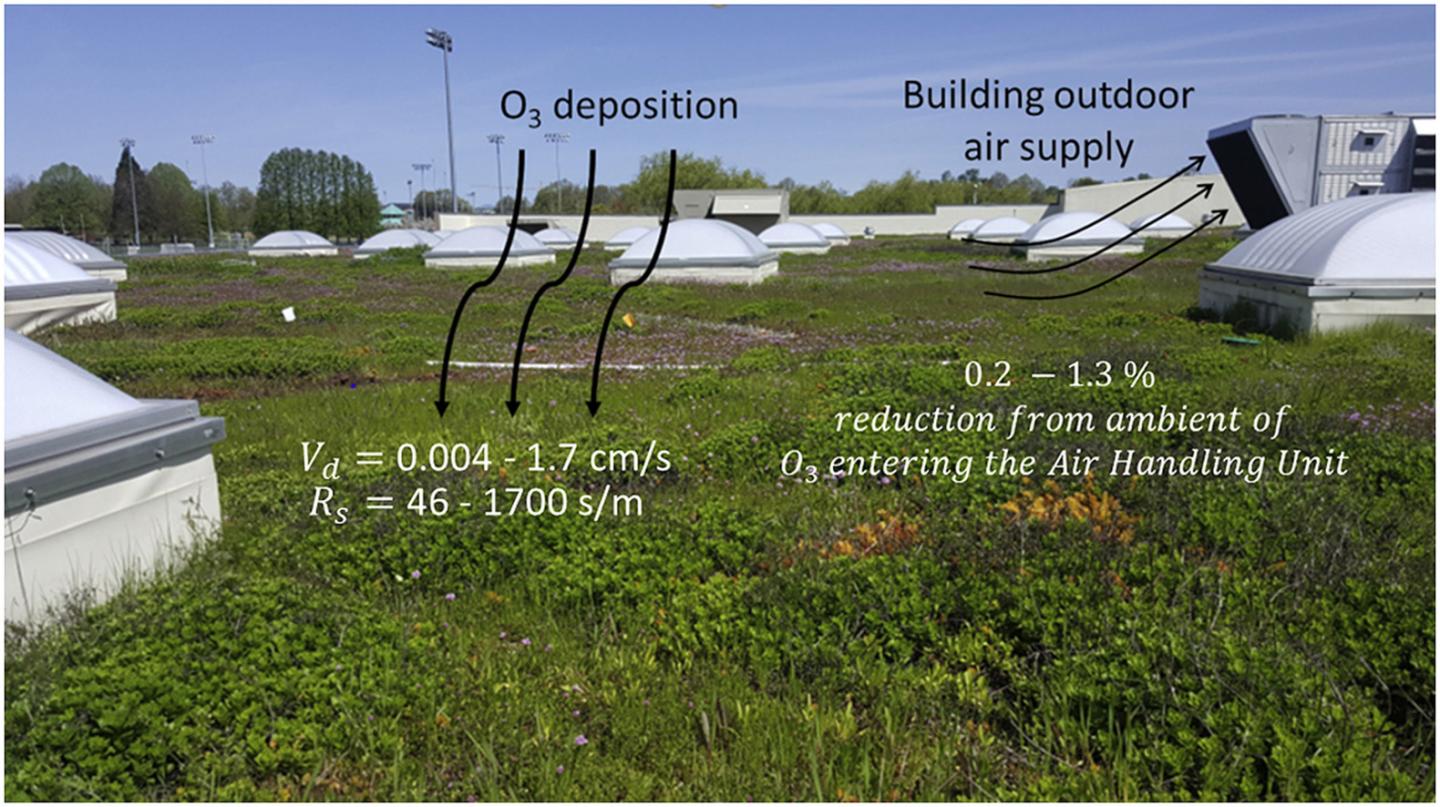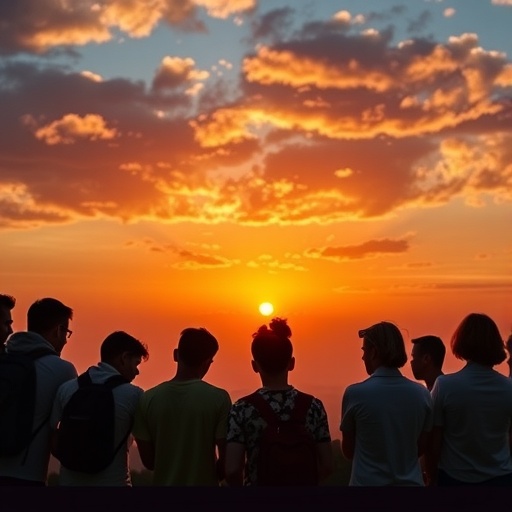
Credit: Portland State University
Green roofs – roofs that are planted with vegetation — may improve the indoor air quality of commercial buildings by cutting the amount of ozone coming into the buildings from the outside, according to new research from Portland State University.
The findings add to the already known environmental benefits of green roofs, including reducing carbon dioxide, decreasing storm water runoff and cutting down on urban heat, according to PSU researchers.
The researchers from PSU’s departments of Mechanical and Materials Engineering, Biology and the university’s Honors College, set up measuring devices on the roof of a big-box retail store in North Portland that was split between a green roof and a more conventional white membrane roof.
They measured the air coming into the building from outdoor intake vents, and found that the air coming in from the green roof area had modestly lower ozone levels than the air coming in from the unplanted area. They found that the vegetation trapped and filtered the ozone in the outdoor air.
The trapping effect is a process known as dry deposition, in which airborne particles collect or deposit themselves on solid surfaces. It’s a natural process that is key to removing pollutants from the atmosphere.
The study was conducted over a two-day period. The authors said the findings warrant a longer-term study – one that could include measuring other pollutants as well as ozone.
###
The study was published in the March 15 edition of Building and Environment.
About Portland State University
As Oregon’s only urban public research university, Portland State offers tremendous opportunity to over 27,000 students from all backgrounds. Our mission to “let knowledge serve the city” reflects our dedication to finding creative, sustainable solutions to local and global problems. Our location in the heart of Portland, one of America’s most dynamic cities, gives our students unmatched access to career connections and an internationally acclaimed culture scene. U.S. News & World Report ranks PSU as Oregon’s most innovative university and among the most innovative in the nation.
Media Contact
Todd Rosenstiel
[email protected]
Original Source
https:/
Related Journal Article
http://dx.




